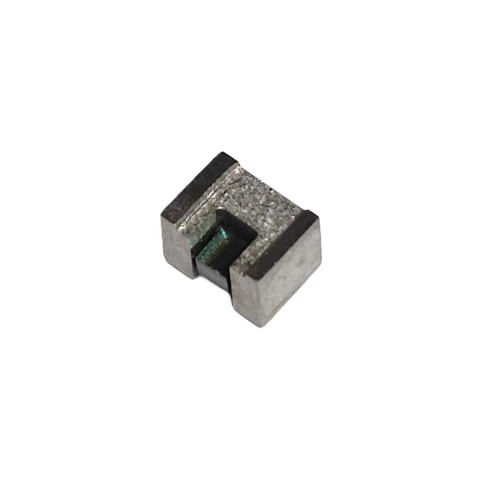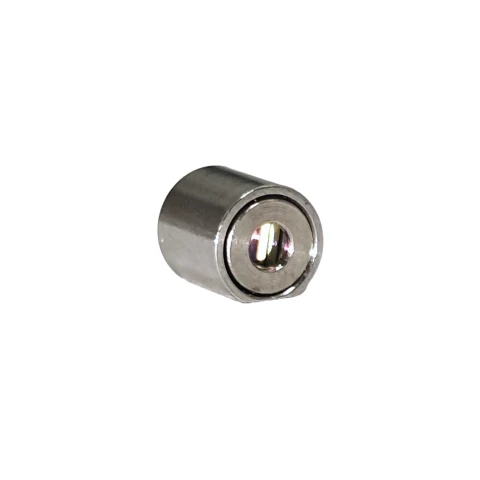Ascentta Polarization Dependent Free Space Isolator (1310nm,1480nm, 1550nm, 1590nm)
Description
The Optical Free Space, Polarization Dependent, Isolator by Ascentta, Inc., provides excellent performance in isolation and transmission while preventing back reflection, all in a compact package.
Multiple customizable options make this a superior product for your application. These include choice of latching or non-latching garnet, Clear aperture size, Optical power level, Package dimensions, and Input and Output polarization rotation angles (for Polarization Dependent Isolators).
Also available as a polarization independent device
Ascentta Polarization Dependent Free Space Isolator (1310nm,1480nm, 1550nm, 1590nm)
Specifications |
|
|---|---|
| Wavelength: | 1310 nm |
| Bandwidth: | -20 nm |
| Power: | 10 W |
| Isolation Range: | 40 – 55 dB |
| Transmission: | Not Specified |
| Insertion Loss (23℃) (Max) Single - Dual Stage: | 0.25 - 0.4 dB |
| Extinction Ratio (Min.): | 30 dB |
| Clear Aperture - Typical (customizable): | 0.5 - 1.2 mm |
| Input Pol-Angle (Positive Or Negative): | 0 - 90 deg |
| Output Pol-Angle (Positive Or Negative): | 0 - 90 deg |
| Operating Temperature: | -5 to +85 ℃ |
| Storage Temperature: | -40 to +85 ℃ |
Features
- Standard Wavelengths include 1310nm, 1480nm, 1550nm, 1590nm
- High Isolation for enhanced signal integrity
- Low Insertion Loss
- Single and Dual Stage Isolation Options
- Non-Latching or Latching type Garnet
- Compact mini-size isolators available
- Options for Custom Wavelengths
- Choice of Clear Aperture
- Choice of Input & Output Polarization Angle Specification
- Options for Optical Power Level
- Available also as a Polarization Independent Free Space Isolator
Applications
- Telecommunications and data communication networks
- Fiber optic amplifiers and lasers
- Fiber optic sensing systems
- Optical signal routing and protection
- Test and measurement setups
- Research and development in fiber optics
For pricing, technical or any other questions please contact the supplier
- No registration required
- No markups, no fees
- Direct contact with supplier
-
Ships from:
United States
-
Sold by:
-
On FindLight:
since 2020
Frequently Asked Questions
The product is a Free-Space Isolator that is Polarization-Dependent. It operates at one of the following wavelengths: 1310, 1480, 1550, or 1590 nm and it comes in two types: single stage or dual stage.
The operating wavelength range for the isolator is ±20 nm around the central wavelength of either 1310, 1480, 1550, or 1590 nm. This indicates the range within which the isolator can operate effectively.
For the single stage isolator, the typical Isolation at 23℃ (room temperature) is 40 dB, and the minimum is 30 dB. For the dual stage isolator, the typical Isolation is 55 dB, and the minimum is 42 dB. Isolation refers to the extent to which the isolator prevents undesired signal flow in the opposite direction.
For the single stage isolator, the typical Insertion Loss at 23℃ is 0.2 dB, and the maximum is 0.25 dB. For the dual stage isolator, the typical Insertion Loss is 0.3 dB, and the maximum is 0.4 dB. Insertion Loss refers to the signal power loss as the signal goes through the isolator, so a lower value means more efficient transmission.
The minimum Extinction Ratio is 30 dB. This is a measure of the power contrast between two polarization states in a signal. A higher Extinction Ratio signifies better performance in maintaining polarization-dependent transmission.
The maximum Optical Power Handling is 10 W/cm2. This is the maximum level of light power per unit area that the isolator can handle without being damaged.
The Operating Temperature range is from -5 to 85 degrees Celsius, and the Storage Temperature range is from -40 to +85 degrees Celsius. These ranges indicate the temperatures within which the isolator can operate safely and be stored without damage.
To order this product, you should contact Ascentta directly. The company allows you to specify custom configurations, including type, stages or layers, packaging, wavelength, clear aperture, package dimension, input and output polarization angle.
The different polarization angles like 0 Degree, 45 Degree, 90 Degree, -45 Degree, -90 Degree represent the orientation of the electric field vector in the plane perpendicular to the direction of propagation. You can specify the desired input and output polarization angles based on your application needs when ordering.
A latching stage type maintains the state of polarization after the power is removed. This is contrasted with the non-latching stage type, which doesn't hold the state of polarization after power removal. The type you choose depends on your specific application requirements.
The available clear aperture options are 0.5mm, 0.9mm, and 1.2mm. The clear aperture is the open area through which light can pass in the optical system. You can specify the clear aperture based on your application needs when ordering.
You should contact Ascentta directly with your specific requirements for package dimensions. The company allows custom configurations and can cater to your specific requirements for this isolator.



